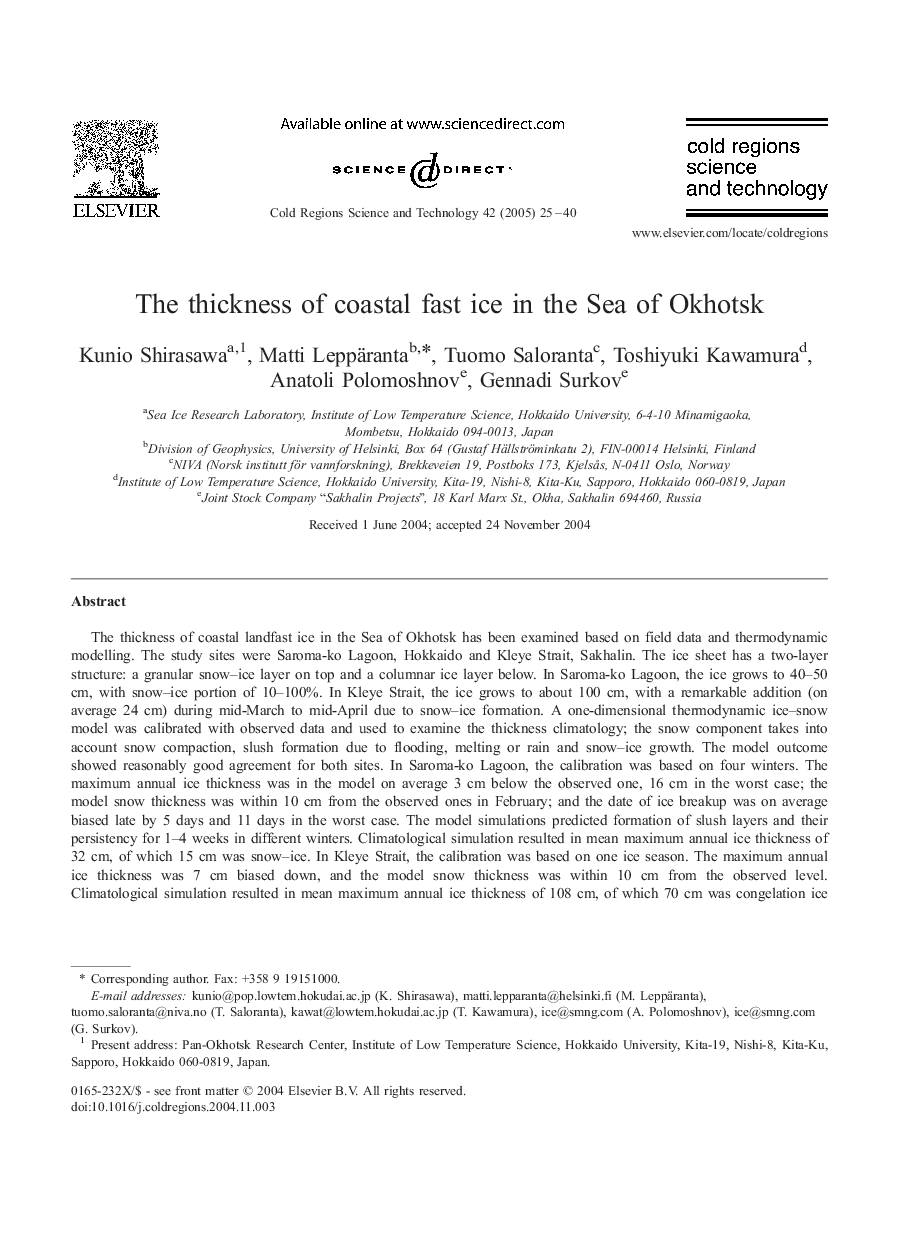| Article ID | Journal | Published Year | Pages | File Type |
|---|---|---|---|---|
| 9521579 | Cold Regions Science and Technology | 2005 | 16 Pages |
Abstract
The thickness of coastal landfast ice in the Sea of Okhotsk has been examined based on field data and thermodynamic modelling. The study sites were Saroma-ko Lagoon, Hokkaido and Kleye Strait, Sakhalin. The ice sheet has a two-layer structure: a granular snow-ice layer on top and a columnar ice layer below. In Saroma-ko Lagoon, the ice grows to 40-50 cm, with snow-ice portion of 10-100%. In Kleye Strait, the ice grows to about 100 cm, with a remarkable addition (on average 24 cm) during mid-March to mid-April due to snow-ice formation. A one-dimensional thermodynamic ice-snow model was calibrated with observed data and used to examine the thickness climatology; the snow component takes into account snow compaction, slush formation due to flooding, melting or rain and snow-ice growth. The model outcome showed reasonably good agreement for both sites. In Saroma-ko Lagoon, the calibration was based on four winters. The maximum annual ice thickness was in the model on average 3 cm below the observed one, 16 cm in the worst case; the model snow thickness was within 10 cm from the observed ones in February; and the date of ice breakup was on average biased late by 5 days and 11 days in the worst case. The model simulations predicted formation of slush layers and their persistency for 1-4 weeks in different winters. Climatological simulation resulted in mean maximum annual ice thickness of 32 cm, of which 15 cm was snow-ice. In Kleye Strait, the calibration was based on one ice season. The maximum annual ice thickness was 7 cm biased down, and the model snow thickness was within 10 cm from the observed level. Climatological simulation resulted in mean maximum annual ice thickness of 108 cm, of which 70 cm was congelation ice and 38 cm was snow-ice, and the ice season lasted from 5 November to 5 June. Thus, slush formation and its freezing are crucial in the study basin.
Related Topics
Physical Sciences and Engineering
Earth and Planetary Sciences
Earth and Planetary Sciences (General)
Authors
Kunio Shirasawa, Matti Leppäranta, Tuomo Saloranta, Toshiyuki Kawamura, Anatoli Polomoshnov, Gennadi Surkov,
